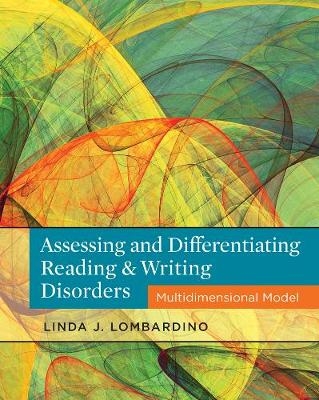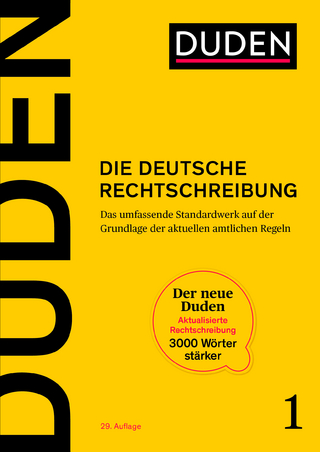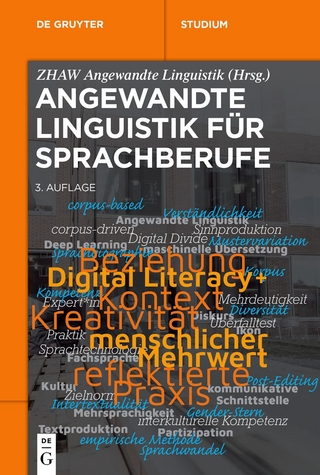
Assessing and Differentiating Reading and Writing Disorders
Delmar Cengage Learning (Verlag)
978-1-111-53989-4 (ISBN)
- Titel ist leider vergriffen;
keine Neuauflage - Artikel merken
ASSESSING AND DIFFERENTIATING READING & WRITING DISORDERS: A MULTIDIMENSIONAL MODEL provides a framework for differentiating among various types of reading and writing disorders in order to assist the practitioner in establishing a differential diagnosis. This text introduces a multidimensional model that can be used to create profiles of a learner's strengths and weaknesses using 10 skill domains associated with reading and writing. Samples profiles for preschool and school-age children include assessment protocols, diagnostic reports, and treatment plans. A synopsis of relevant literature related to the relationships between spoken and written language, and the best predictors of reading achievement, along with a chapter devoted to counseling and intervention round out the text to provide a complete roadmap for evaluating the weaknesses and strengths in children who have reading and writing difficulties. Professionals who test children for reading and writing disorders and advanced students will find this text an essential tool.
Linda J. Lombardino, PhD is a Professor of Speech-Language Pathology who has specialized in spoken and written language disorders for many years. For more than a decade, she directed the reading disabilities clinic in the Department of Communication Sciences and Disorders' Speech and Language Clinic . She has taught for more than 30 years in the Department of Communication Sciences and Disorders at the University of Florida and has recently moved into the School of Special Education, School Psychology, and Early Childhood Studies. She is a co-author of the Assessment of Literacy and Language (ALL; Lombardino, Lieberman, & Brown, 2005). She currently teaches graduate coursework in language and literacy development, assessment, and intervention.
1. FOUNDATIONS FOR A PRACTIONERS' MODEL OF READING ASSESSMENT.
Component Skills of Reading. Spoken Language and Written Language Connections. Relationships between Strengths and Weaknesses in Oral Language Skills and Reading Skills. A Perspective on Reading Difficulties. Learning Disabilities. Research on English Language Learners. Educational Initiatives. Research on Differentiating Types of Reading Disabilities. Summary of the Foundations of Literacy.
2. A MULTIDIMENSIONAL MODEL FOR ASSESSING READING AND WRITING.
Overview of the Multidimensional Model for Assessing Reading and Writing. ENVIRONMENTAL FACTORS MODULE. Definitions and Scientific Support. NEUROBIOLOGICAL AND NEUROCOGNITIVE FACTORS MODULE. Definitions and Scientific Support. Neurobiological Factors. Genetic Factors. Neurocognitive Factors. Reasoning Abilities. Language Processing. Working Memory Processes. Speed of Processing. The Interaction of Biology and Environment. LANGUAGE KNOWLEDGE MODULE. Definitions and Scientific Support. Vocabulary Knowledge. Morphological Knowledge. Syntactic Knowledge. Discourse Knowledge. Word retrieval. PHONOLOGICAL KNOWLEDGE MODULE. Definitions and Scientific Support. PRINT KNOWLEDGE MODULE. Definitions and Scientific Support. Print Awareness. Emergent Writing. Letter Knowledge. GRAPHOPHONEMIC INTEGRATION MODULE. Definition and Scientific Support. Mapping Sound and Letter Units. Invented Spelling. WORD-LEVEL READING MODULE. Definitions and Scientific Support. Definitions and Scientific Support. Stages of Word-level Reading. WORD-LEVEL SPELLING MODULE. Definitions and Scientific Support. Stages of Spelling Development. TEXT-LEVEL READING MODULE. Definitions and Scientific Support. Text-level Reading Fluency. Text-Level Reading Comprehension. TEXT-LEVEL WRITING MODULE. Definitions and Scientific Support. Linking Reading and Writing. READING ACHIEVEMENT. Definitions and Scientific Support. Components of Reading Achievement. SUMMARY OF CONSTRUCTS NEEDED FOR READING.
3. APPLICATION OF THE MULTIDIMENSIONAL ASSESSMENT OF READING AND WRITING DISORDERS TO THE DIAGNOSTIC PROCESS.
General Principles for Assessing Reading and Related Processes. The Evaluation Process. Formal Assessment Procedures for Preschoolers through grade 1. Formal Assessment Procedures for Grade 1 and Beyond. Goals of Criterion Referenced Assessment and Diagnostic Procedures. Informal Assessment Measures for Spoken and Written Discourse. Spoken and Written Discourse Language Samples from Learners with a Reading Disability. Evaluating Text Genres in Speaking. Evaluating Text Genres in Writing. Factor to Consider when Diagnosing Reading and Writing Disorders. Appendix 3-1: Caregiver/Teacher Questionnaire for Emergent Readers (4- 7 years). Appendix 3-2: Caregiver/Teacher Questionnaire for School Age Children (end of 1st grade and beyond). Appendix 3-3: MARWR Checklist
4. IDENTIFYING AND CLASSIFYING CHILDREN AT RISK FOR READING DEFICITS AND STRUGGLING READERS.
Using the model to Evaluate and Diagnose Emergent Readers. Language and Emergent Literacy Deficit Profiles. Profile of Preschool and First grade Learners At Risk for Reading Deficit. Profile 1: Mixed Language and Emergent Literacy Deficit. Profile 2: Emergent Literacy Deficit. Profile 3: Environmental Disadvantage Literacy Deficit. Sample Diagnostic Report for Profile 1a: Mild to Moderate Mixed Spoken Language and Emergent Literacy Deficit. Sample Diagnostic Report for Profile 1b: Severe Mixed Spoken Language and Emergent Literacy Deficit. Sample Diagnostic Report for Profile 2: Emergent Literacy Deficit. Sample Diagnostic Report for Profile 3: Environmental Disadvantage Deficit.
5. SCHOOL AGE LEARNERS WITH READING DEFICITS PROFILES.
Using the MARWR to Evaluate and Diagnosis School-Age Learners with Reading Disabilities. Reading Disabilities as Identified in MARWR. Dyslexia. Most Common Diagnostic Indicators of Dyslexia. Mixed Spoken language and Literacy Disorder. Comprehension Deficit. Summary of Implications for Identifying Profiles of Strengths and Weaknesses. Sample Diagnostic Report for Profile 4a: Dyslexia. Sample Diagnostic Report for Profile 4b: Dyslexia (follow-up evaluation). Sample Diagnostic Report for Profile 5: Mixed Spoken Language and Reading. Sample Diagnostic Report for Profile 6: Comprehension Deficit.
6. COUNSELING AND INTERVENTION. Rebecca Wiseheart, Ph.D., CCC-SLP
The Emotional Rollercoaster of Diagnostic Counseling. Debunking the Myths of Dyslexia. Maintaining a Positive Relationship with Schools. Explaining the Diagnostic Results. Questions from Parents. Additional Parent Resources. Choosing an Intervention Setting. The General Education Setting. The Special Education Setting. The Clinical Setting. Guiding Principles for Therapy Providers. Core Components of Instruction. Oral Language Instruction. Phonological Awareness Instruction. Print and Letter Knowledge Instruction. Phonics and Word Recognition Instruction. Vocabulary Instruction. Fluency Instruction. Text Comprehension Instruction. Sample Treatment Plans. Treatment Plan for Emergent Literacy Deficit Profile: Brittany Brown". Treatment Plan for Dyslexic Profile: "Frank Fadino". Treatment Plan for Reading Comprehension Deficit Profile: "Harry Harper". Treatment Plan for Mixed Language and Reading Deficit Profile: "Ginny Gomez". Summary.
Abridged version of the TOC
1. FOUNDATIONS FOR A PRACTIONERS' MODEL OF READING ASSESSMENT.
2. A MULTIDIMENSIONAL MODEL FOR ASSESSING READING AND WRITING.
3. APPLICATION OF THE MULTIDIMENSIONAL ASSESSMENT OF READING AND WRITING DISORDERS TO THE DIAGNOSTIC PROCESS.
4. IDENTIFYING AND CLASSIFYING CHILDREN AT RISK FOR READING DEFICITS AND STRUGGLING READERS.
5. SCHOOL AGE LEARNERS WITH READING DEFICITS PROFILES.
6. COUNSELING AND INTERVENTION. Rebecca Wiseheart, Ph.D., CCC-SLP"
| Verlagsort | Clifton Park |
|---|---|
| Sprache | englisch |
| Maße | 185 x 230 mm |
| Gewicht | 400 g |
| Themenwelt | Schulbuch / Wörterbuch ► Wörterbuch / Fremdsprachen |
| Geisteswissenschaften ► Sprach- / Literaturwissenschaft ► Sprachwissenschaft | |
| Medizin / Pharmazie ► Gesundheitsfachberufe ► Logopädie | |
| ISBN-10 | 1-111-53989-8 / 1111539898 |
| ISBN-13 | 978-1-111-53989-4 / 9781111539894 |
| Zustand | Neuware |
| Informationen gemäß Produktsicherheitsverordnung (GPSR) | |
| Haben Sie eine Frage zum Produkt? |
aus dem Bereich


